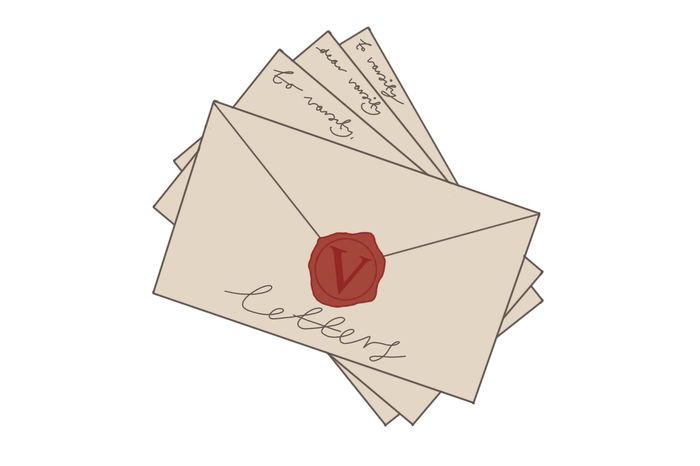Van Gogh and the performance of letter-writing
Georgia Fullerton asks whether we should try to understand the artist through their letters and the dangers of exhibiting them

The nature of studying letters and letter writing is often fraught with ambiguities. Are letters classed as literature? Are letters to be kept purely private? Is the publication of letters an intrusion into the privacy of the individual? When attending the recent Van Gogh exhibition at the National Gallery in London, the complex connection between art, intimacy, and privacy was explored and significantly problematised through the form of the letter and its ambivalence. The exhibition’s subtitle “Poets and Lovers” immediately establishes an intimate perspective into the celebrated artworks, enhanced by the large quotations on the walls adjacent to Van Gogh’s masterpieces.
“We approach art not merely because it is interesting but because it is felt to be made by someone”
Despite being a unique addition to the exhibition, connecting the life of the artist to the artwork, I thought about the dangers of the exposure of these private exchanges between Van Gogh and his brother, Theo. Their display stripped away both the privacy of these letters and the intimacy between the observer and the artwork. Instead, they were fuelling a desire to understand the artist’s intentions which reduces the impact of art on the individual.
We approach art not merely because it is interesting but because it is felt to be made by someone; the combination of Van Gogh’s letters with his art encouraged a fixation on intention, personal style, and authority, instead of feeling. Thus, in placing letters alongside art and elevating them to that of an objet d’art, we lose the intimacy of the unique form of the letter as well as the irreplaceable connection between individual and artwork. One quotation from the exhibition which seemingly contradicts its very presence is as follows:
“When the thing depicted is stylistically absolutely in agreement and at one with the manner of depiction, isn’t that what creates the quality of a piece of art?” [to Theo 9th June 1889]
Being purported as a “piece of art” on the wall increases the tension between the form of the letter and its content. If a letter is an innately intimate and private form it should not necessarily be intruded upon, yet here the quotation is displayed for all to see, in disagreement with its “manner of depiction”. I found that the quotations impacted my own interpretation of the art. But this could be seen as positive, causing me to question and complicate my instincts; or it can reduce the individual’s interpretation to being driven by the search for the artist’s intention which is arguably irrelevant.
“In a painting I’d like to say something consoling, like a piece of music” [to Theo, 3rd September 1888]
With this quote (left) placed adjacent to Van Gogh’s celebrated piece, Sunflowers (1889), my mind was instead drawn to the natural softness of flowers visually, instead of my initial reaction to this work, observing the distortion of these grand sunflowers, stuffed into a vase, and the distressing yellow tones which were both startling and tranquil. Letters allow for an exploration of language which is not tainted by “poetics”. However, I often like to see letters as somewhat of a self-constructed performance, manipulating how others perceive you through your epistolary authority, which is arguably intensified through this display of letters.
“the tone of a piece of art is always responded to but always in doubt, much like the letter”
As Hermione Lee writes in her book Dangerous Letters, “if you are using a letter in a biography, you must recognise the dangerousness of enlisting such a performance.” It is evident that, despite the casualness of letter writing, it is paired problematically with what the authorial voice of the letter desires to portray. In contrast to art or literature, the author of a letter knows who the recipient should be, therefore we can gain an apparent insight into the author’s most intimate thoughts. However this is clouded by the performativity of letter writing; the author wants to be seen in a certain way, sculpting themselves to the recipient, causing the Letter to become a form of “self-dramatisation or disguise,” as Lee puts it, and when paired with artwork, simultaneously sculpts the observers interpretation.
In order to incite an emotional connection between artwork and individual, there are things which must not be said; the tone of a piece of art is always responded to but always in doubt, much like the letter. It is this ambiguity which characterises the appreciation of artworks as well as the appreciation of the letter form, yet when paired together the response becomes irresolute.
Want to share your thoughts on this article? Send us a letter to letters@varsity.co.uk or by using this form.
 News / Uni Scout and Guide Club affirms trans inclusion 12 December 2025
News / Uni Scout and Guide Club affirms trans inclusion 12 December 2025 News / Pembroke to convert listed office building into accom9 December 2025
News / Pembroke to convert listed office building into accom9 December 2025 News / Cambridge Vet School gets lifeline year to stay accredited28 November 2025
News / Cambridge Vet School gets lifeline year to stay accredited28 November 2025 Features / Searching for community in queer Cambridge10 December 2025
Features / Searching for community in queer Cambridge10 December 2025 News / Uni redundancy consultation ‘falls short of legal duties’, unions say6 December 2025
News / Uni redundancy consultation ‘falls short of legal duties’, unions say6 December 2025









